Made up of 514,000 square kilometers broken into a whopping 77 provinces, Thailand is a country where you need much more than a week – or even a year – to fully appreciate it.
Very few locals have even been to every province, while most international tourists only make it to a handful, with Chang Mai, Bangkok and Phuket being the biggest draws.
To help get your wanderlust juices flowing, here’s a list of all 77 and some of their top attractions. Keep in mind the capital city of each province goes by the same name. For example, the capital of Chiang Rai province is Chiang Rai city.
To make it easier, we’ve divided the list into Thailand’s six main regions: north, northeast, central, west, east and south.
NORTH
1. Chiang Mai: Trekking
Doi Inthanon National Park covers 482.40 square kilometers. As one of Thailand’s most popular provinces for tourists, Chiang Mai has plenty of great attractions but one of the best has to be Doi Inthanon National Park. Capped by the 2,565-meter peak of Doi Inthanon — Thailand’s tallest — it’s a lush expanse of waterfalls, trekking trails, campgrounds and hill tribe villages.
2. Chiang Rai: Golden Triangle
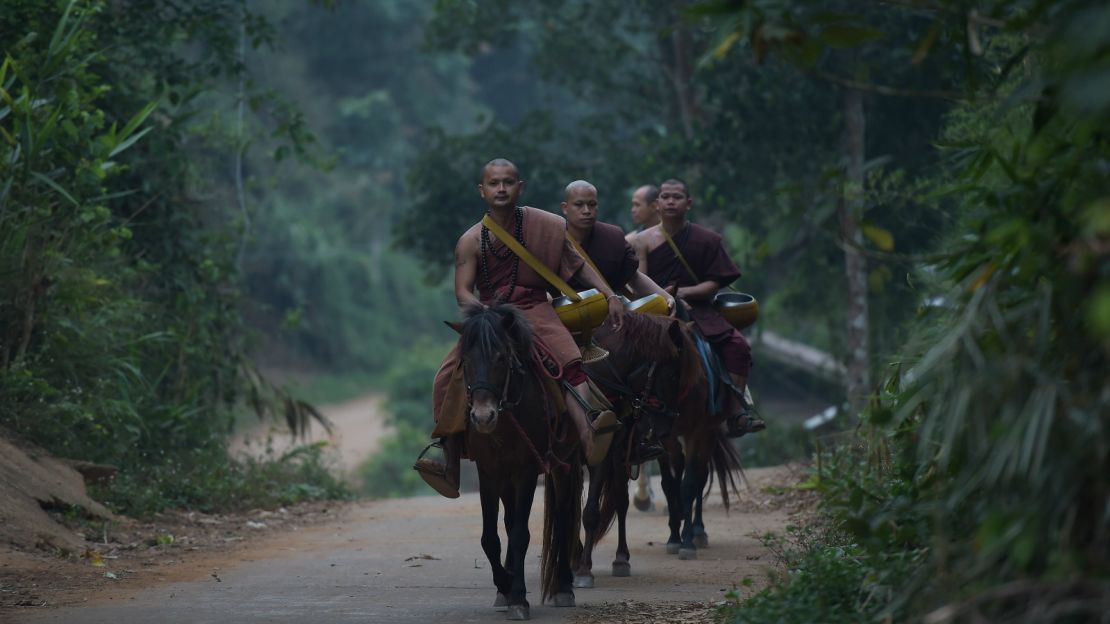
This big beauty in Chiang Saen overlooks the Golden Triangle, offering views into Laos and Myanmar.
Thailand’s northernmost province is the best place to see the famed (and infamous) Golden Triangle.
There’s not much golden or triangular about it, really, but spending time at the intersection of Laos, Myanmar and Thailand floating down the Mekong, trekking in the hills or learning about the area’s drug trade at the Hall of Opium is worth a few days in addition to the city of Chiang Rai’s attractions.
3. Lampang: Elephants
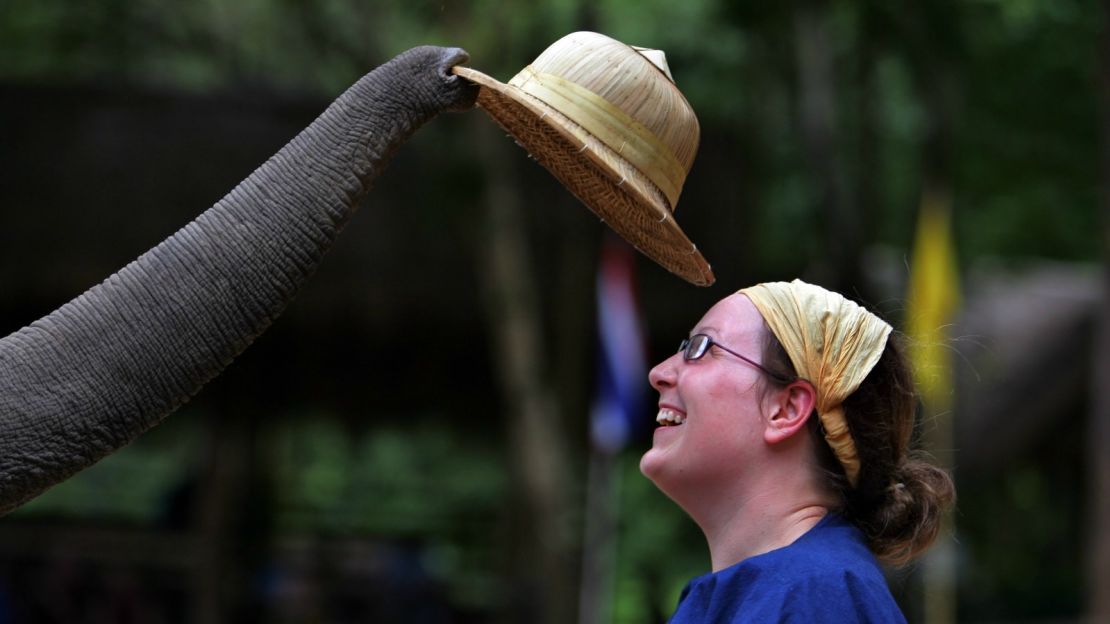
The province of Lampang is a popular destination for those who like to get close to nature. Really close. The Thai Elephant Conservation Center under Royal Patronage lets you spend anywhere from a few days to a month helping care for some of the 50 elephants that live there.
4. Lamphun: Historic temples
The most popular sight in this small but historically significant province is Wat Phra Tha Haripunchai, which dates back anywhere between 1,200 and 400 years, depending on what you consider the original structure to be. Debate aside, the 46-meter-tall chedi is as impressive as any you’ll see in Thailand.
5. Mae Hong Son: Hippy hideout
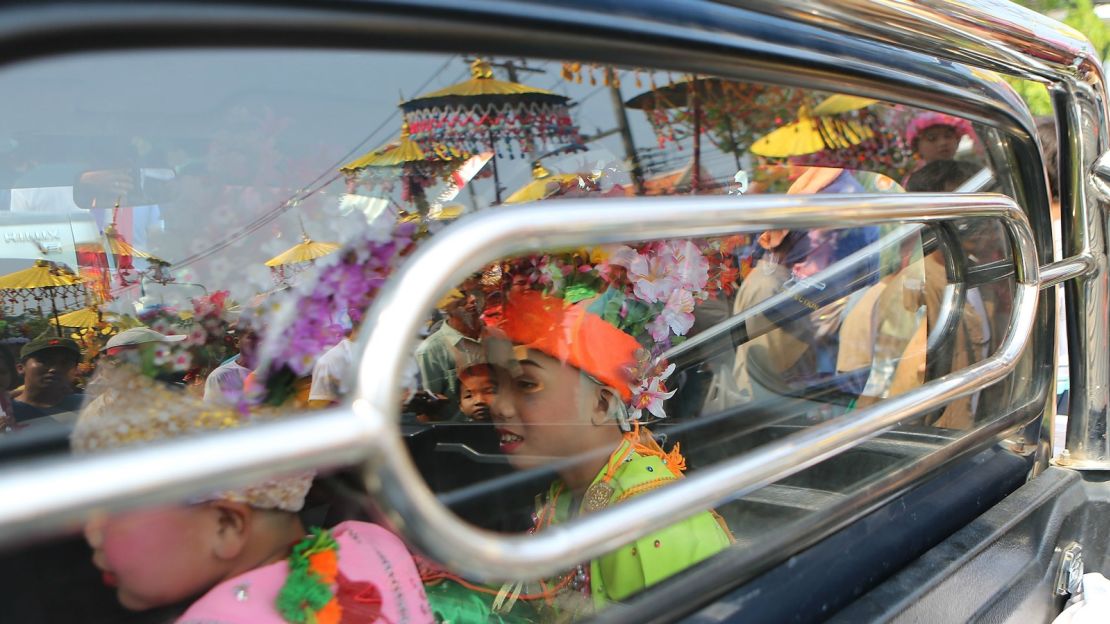
The most mountainous of Thailand’s provinces, Mae Hong Son offers plenty for nature lovers as most of it is covered in virgin forest. The town of Pai is a huge draw for backpackers and is full of bars and music (some say too full), but it’s easy to get out of town for some peace and quiet if that’s not your scene.
6. Nan: Buddhist art
One of the most remote provinces in Thailand, Nan is quiet and leafy. Among Nan’s highlights are the mysterious and intricate carvings and murals at Wat Nong Bua, which are likely over 100 years old, although no one knows for sure as records have been lost.
7. Phayao: Heaven and hell
Trees and mountains dominate this northern Thailand province, but there are some important religious sites, too.
The most visited of the lot is Wat Si Khom Kham, which has the tallest Buddha image in the region at 16 meters (52 feet). Best of all, however, is the cheesy but somewhat disturbing onsite exhibit that depicts what heaven and hell are likely to look like.
8. Phrae: Traditional architecture
Phrae’s Wat Phra That Cho Hae is a royal temple built in the late 12th century. The excitement level in Phrae is pretty low, but there are plenty of mountainous parks open for trekking outside the main town.
The architecture is notable, too. Many hotels and guesthouses offer a map that details some of Phrae’s old, teak buildings dating back a hundred years or more.
9. Uttaradit: Camping
One of Thailand’s most mountainous provinces, Uttaradit’s gorgeous Phu Sai Dao National Park is 200 square kilometers of deciduous, dipterocarp, pine and evergreen forests. Plenty of hiking trails and camping grounds vein the park’s landscape near the border with Laos that has, through history, sheltered various groups of rebels wanting to stay off the radar.
Thailand tourism myths: 7 things you shouldn’t believe
Getting to northern Thailand
Several Thai carriers (see transportation info at end of article) offer daily flights from Bangkok to Chiang Rai, Chiang Mai, Lampang, Nan and Phrae.
Buses heading to Thailand’s northern provinces depart from Bangkok’s Morchit terminal. Call 1490 for the latest bus schedule and route information.
Thailand’s State Railway operates daily trains to Chiang Mai from Bangkok on its Northern Line. Visit their website for schedule information.
NORTHEAST
10. Amnat Charoen: Nature walks
One of Thailand’s youngest provinces (created in 1993), Amnat Charoen’s main attraction is Phu Sa Dok Bua (Mountain Lotus Pool) in Senangkhanikhom district, a collection of 11 stone pools that each contain a different species of lotus near a nice waterfall. It’s a bit of a hike to get to but worth the trip.
11. Bueng Kan: Wildlife spotting
Thailand’s newest province, Bueng Kan, was officially created on March 23, 2011. Outside of the capital, there’s a nice wildlife sanctuary called Phu Wua Wildlife Reserve with plenty of trekking trails, waterfalls, wildlife and camping.
12. Buriram: Khmer ruins
Part of the mighty Khmer Empire that ruled a millennium ago, the province of Buriram offers one of the most interesting sights in the northeast: Phanom Rung Historical Park.
The park has an incredible Hindu temple on the edge of a 400-meter-high volcano, the central attraction being a shrine dedicated to Shiva.
13. Chaiyaphum: Nature walks
This nearly circular province on the border between central and northeastern Thailand is one of the country’s largest, bisected by the Phetchabun mountain range. The huge Tat Ton National Park is loaded with things to see – wide waterfalls, strange rock formations, large caves and scattered Khmer ruins.
14. Kalasin: Dinosaur hunting
The northeast province of Kalasin is known for its large hoard of dinosaur bones. The best place to check them out is the Sirindhorn Museum and Phu Kum Khao Dinosaur Excavation Site, which has displays, bones, statues and excavation pits.
15. Khon Kaen: Cobra handlers
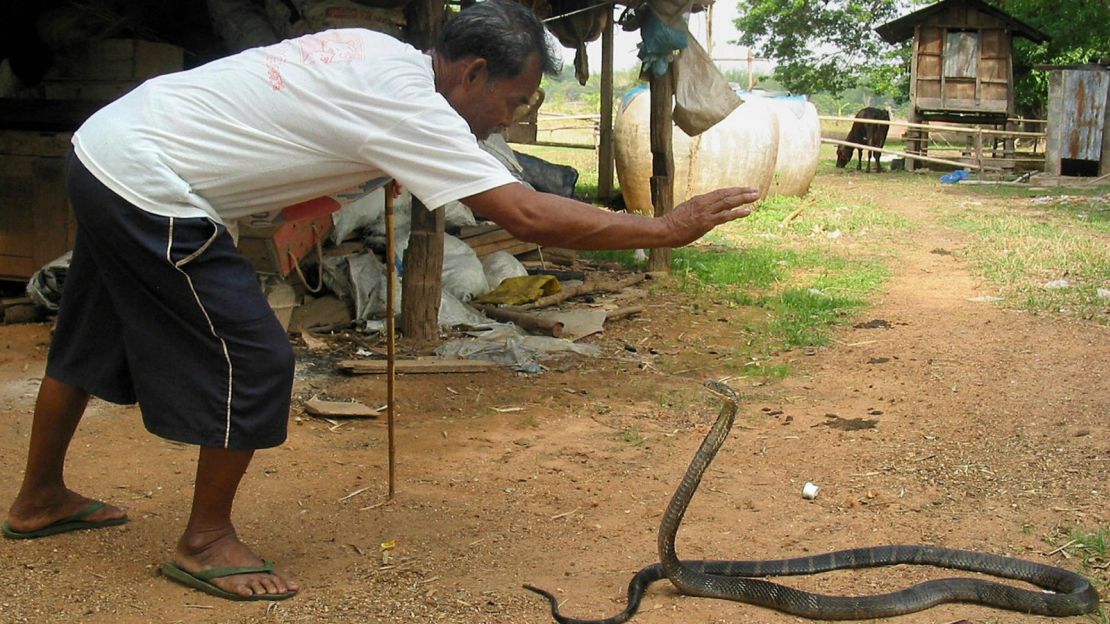
If you find yourself in Khon Kaen – right in the middle of Thailand’s Isaan region – a trip to Baan Kok Sa-nga is in order.
Also known as the King Cobra Village, the one hobby all the villagers have in common is snake breeding. Locals entertain visitors with brave and/or stupid tricks such as cuddling, boxing and outright taunting them.
16. Loei: Mountains and sunsets
The fertile, mountainous province of Loei is a favorite destination for those wanting scenic drives or cool weather, with the peaks of Phu Rua National Park being a hot draw.
If you head to Tham Pha Ya cave near Ban Mai Santi Tham at sunset, you can see millions of bats streaming out into the dusky sky to get some grub, a scene that usually lasts for about an hour.
17. Maha Sarakham: Buddhist relics
About 90 minutes’ drive south of the main town of Maha Sarakham stands the large forested temple of Prathat Na Dun. There’s a replica of a traditional Isaan village here. But the main attraction is the chedi, which is a copy of the 10th-century original erected on the site and houses a relic of the Buddha.
18. Mukdahan: Strange stones
Right on the border with Laos, Mukdahan is a remote and sparsely populated province that doesn’t get many visitors despite having some cool attractions.
Check out the Hin Thoep rocks in Mukdahan National Park – large sandstone edifices that 100 million years of rain and wind have shaped into planes, animals and even a flying saucer, depending on your ability to use your imagination.
19. Nakhon Phanom: War history
This far northeastern province has a violent history. Serving as a base for the U.S. 56th Air Commando Wing, it saw some of the fiercest fighting to take place on Thai soil during the Vietnam War. Bob Hope stopped over on a USO tour.
Ho Chi Minh actually lived in Nakhon Phanom between 1928 and 1931 in the tiny village of Ban Nachok. His former home and a modern museum are now open to visitors. Military tourism aside, you can also check out Wat Phratha Maha Chai, one of the holiest temples in the province.
20. Nakhon Ratchasima: Phimai Historical Park
Thailand’s largest province – often called Korat – is another destination with Khmer and Hindu influence, especially noticeable in the Phimai Historical Park. Smaller than Angkor Wat but built in the same style – despite being a Buddhist temple and not Hindu – its origins date back to the 12th century.
21. Nong Bua Lamphu: Wat Tham Klong Pen
Things don’t move too fast in Nong Bua Lamphu, another one of Thailand’s younger provinces (it was created in 1993). Hit up Wat Tham Klong Pen, a Khmer-era temple where revered monk Pu Khao Analyo lived and meditated. In a way he’s still there, as the temple keeps his ashes in an urn onsite.
22. Nong Khai: Sculpture park
This skinny little province was an important site for warring empires over the past few centuries, but today it’s busy with traffic in and out of Laos via the Friendship Bridge.
One of its wackiest attractions is Sala Kaew Ku (aka Wat Khaek), built by a philanthropist who believed all religions could mix harmoniously. There are dozens of large statues from Christian, Hindu and Buddhist religions, among others, spread throughout the landscaped grounds.
23. Roi Et: Plalan Chai Lake
The people of Roi Et province know how to build monuments – the place is littered with them. But for a relaxing day out you could do worse than Bueng Phalan Chai, a large lake with plenty of green space, walking trails, shrines, statues and waterfalls.
24. Sakon Nakhon: Ancient calendar
This province is home to Thailand’s biggest natural lake, but another key attraction is Phra That Phu Pek, a small but interesting Khmer Buddhist temple that dates to the 17th century. It also contains a primitive solar calendar that was once used to plan religious rites and harvests.
25. Sisaket: Khao Phra Wihan National Park
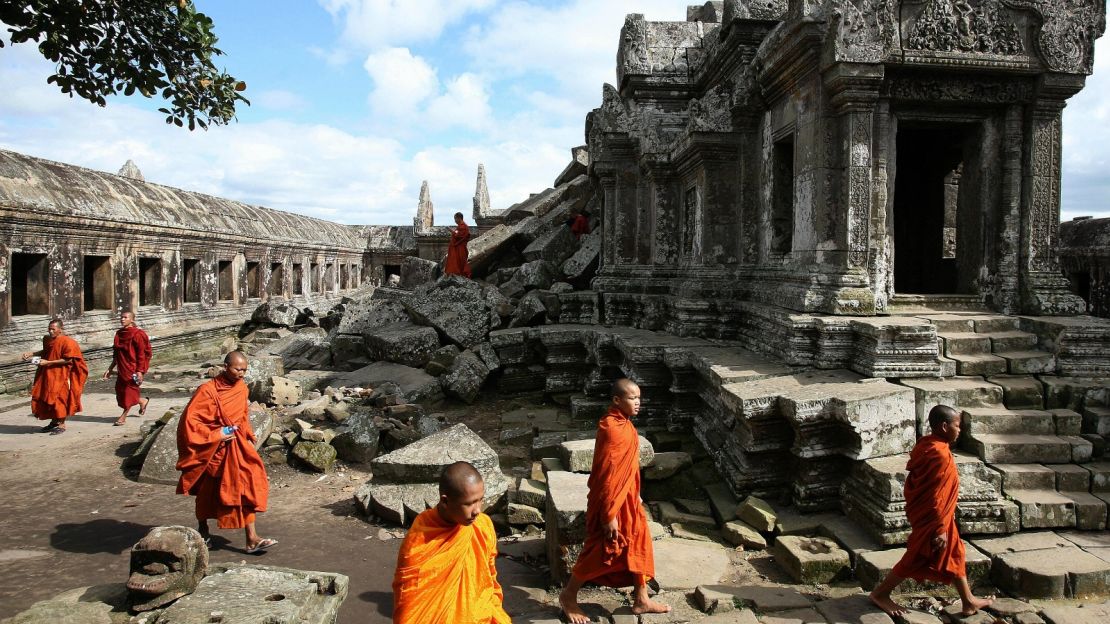
Located in the bottom corner of northeastern Thailand, Sisaket province is filled with Khmer ruins. The best are in the Khao Phra Wihan National Park. The most well known is Prasat Preah Vihear, but it’s been the subject of a Thai/Cambodian standoff over access to the temple in recent years. Check first, but if it’s advisable not to go, there are plenty of other ruins in this large area.
26. Surin: Elephant Village
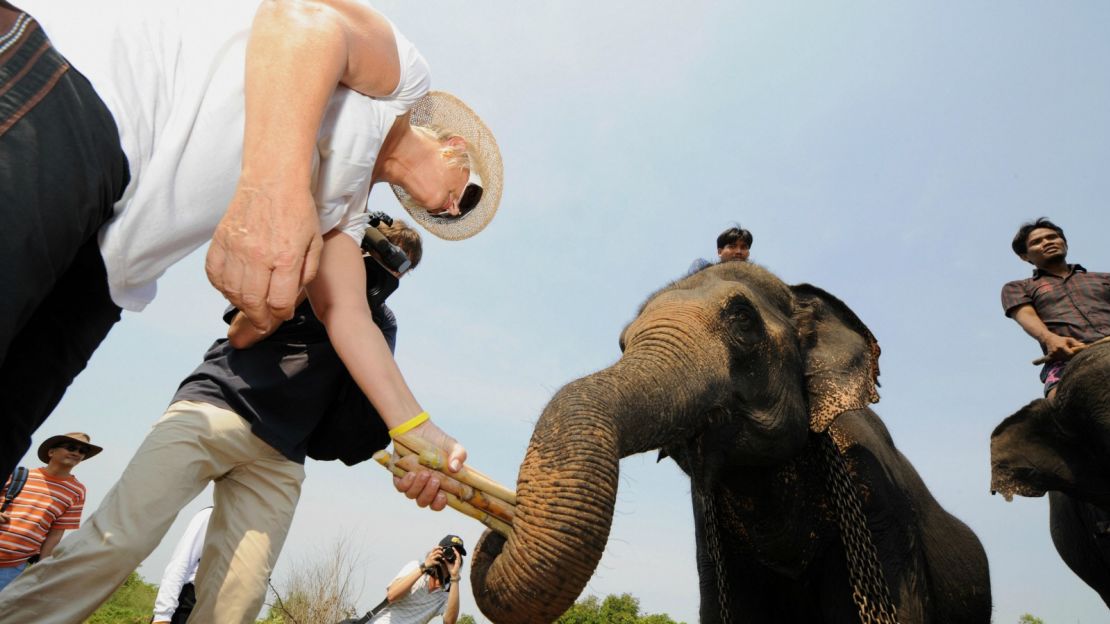
Many Thais call Surin the home of the Thai elephant because the giant beasts have been central to Surin locals’ lives for centuries.
What better reason, then, to visit Ban Ta Klang Village, or the Elephant Village. You can see how the elephants are trained, go on a ride, learn about their role in the development of Thai society and even watch the trainers bathe them in the river.
27. Ubon Ratchathani: Hiking
The easternmost of Thailand’s provinces, Ubon, as it’s known, is also one of the most scenic. Pha Taem National Park is filled with important temples, waterfalls, hiking trails, camping facilities and 4,000-year-old rock paintings.
28. Udon Thani: Ban Chiang

Another Thai province that played an important part in the Vietnam War (and where Mel Gibson filmed “Air America”) is Udon Thani. The province’s main attraction dates back way further than that though.
Take a trip to the Ban Chiang National Museum, where you can see excavations of a 5,600-year-old village, ancient pottery, tools, jewelry and even bones.
29. Yasothon: Buddhist artifacts
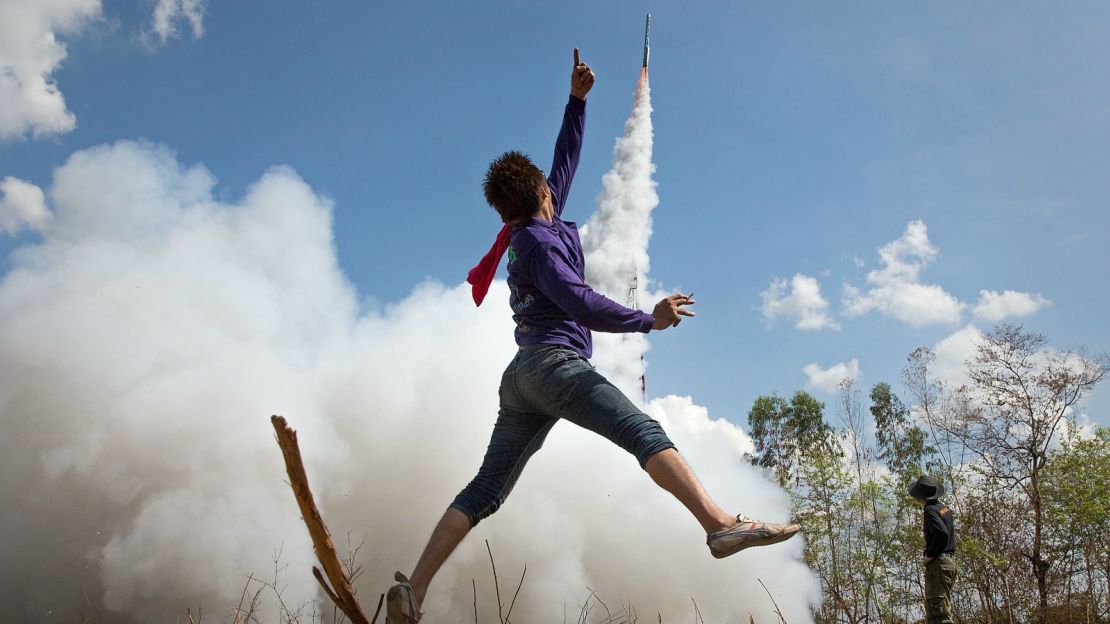
Most famous for its insane, rowdy rocket festival in May, Yasothon has a couple of attractions that are nice to visit year round.
The Ban Song Puey Archaeological Site contains a large Buddha image, a replica of the Buddha’s footprint and soil taken directly from the place where the Buddha reached enlightenment.
40 Thai foods we can’t live without
Getting to northeast Thailand
Several airlines offer daily flights from Bangkok (see end of article for airline list) to the following northeastern cities: Nakhon Phanom, Udon Thani, Ubon Ratchathani, Loei, Roi Et and Sakon Nakhon.
Buses heading northeast depart from Bangkok’s Morchit terminal. Call 1490 for the latest bus schedule and route information. Thailand’s State Railway also runs a northeast line. Visit www.railway.co.th for schedule information and to book online.
WEST
30. Tak: Bhumibol Dam
The seat of a great kingdom that goes back dozens of centuries, Tak today is known for its cool, green mountains and scenery. One of the top man-made attractions is Bhumibol Dam, which holds back the biggest lake in Thailand and is surrounded by parks, trails and waterfalls.
31. Kanchanaburi: Bridge over the River Kwai
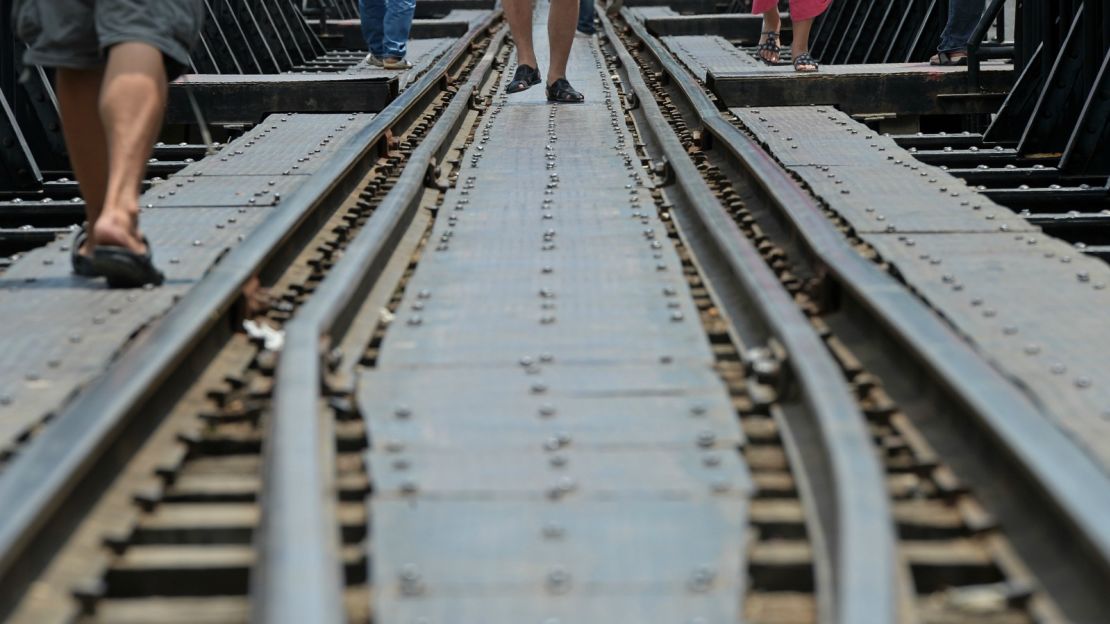
The Death Railway, which claimed the lives of about 16,000 POWs and 100,000 Asian forced laborers, was built by the Japanese in 1942-43 to move supplies from Thailand into Myanmar (then called Burma).
Thailand’s third-largest province is also one of its most famous because of a litany of historic events and its proximity to a strategic border crossing with Myanmar.
Don’t miss the World War II memorials in the main city of Kanchanaburi, which include a sobering war graveyard, historical parks, museums and the famous bridge over the River Kwai.
32. Phetchaburi: Phra Nakhon Khiri Historical Park
Don’t worry about the hike. Phra Nakhon Khiri has a cable car for the exercise averse. This skinny seaside province has long been a popular destination for Bangkok residents who want some sun and sand.
Head to Phra Nakhon Khiri Historical Park, a lush, hilly area that includes Khao Wang, a summer palace built by Rama IV in 1860. There’s also a museum, a cable car, walking trails and lots of monkeys – watch out, they can be nasty!
33. Prachuap Khiri Khan: Thailand’s first beach resort
Another province popular for weekend getaways among Bangkokians, Prachuap is where you’ll find the country’s revered beach resort of Hua Hin.
The night market here is what brings the crowds, but check out Maruekhathai Yawan Palace, a beautiful wooden building near the beach built in 1923 by King Rama VI.
34. Ratchaburi: Caves
With its proximity to Bangkok, Ratchaburi’s roads are often clogged with tour buses heading for a cookie-cutter tour of Damnoen Saduak floating market. Avoid this tourist trap and check out Khao Bin Cave, which has some impressive stalactites and stalagmites and a spring that locals hold sacred.
The vegetarian’s guide to Thailand
Getting to western Thailand
Nok Air operates regular flights from Bangkok to Mae Sot, Tak. To get to Kanchanaburi, catch the train at Bangkok’s Thonburi station or take a bus from either the northern Morchit station or southern Sai Tai Taling Chan bus station.
Buses to Ratchaburi, Prachuap and Phetchaburi depart from Sai Tai Taling Chan as well. Call 1490 for the latest bus schedule and route information.
CENTRAL
35. Ang Thong: Drums
This small, flat little ink-blot of a province just north of Bangkok is covered with temples, but for something different check out Baan Phae village, where the locals make drums from cowhides and the soft wood of local trees.
36. Ayutthaya: Ransacked ruins
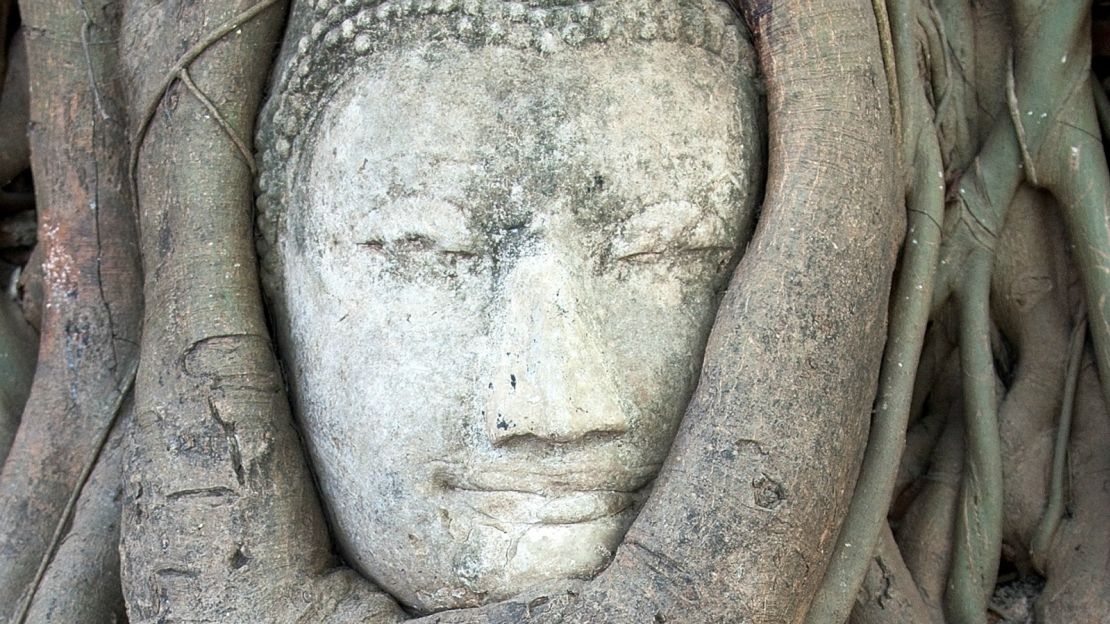
It would be remiss to write about Ayutthaya and recommend anything other than its UNESCO-listed ruins. There are dozens of ancient sites to visit, all telling a piece of the tale that was the magnificent, doomed Ayutthaya Kingdom, which was the capital of Siam from 1351 to 1767.
37. Bangkok: Asiatique
One of the city’s newest attractions is Asiatique, a lifestyle and entertainment complex filled with shops, restaurants, theaters and bars that’s bringing locals back to the Chao Phraya River.
38. Chainat: Bird-watching
If you find yourself in this little province a few hours’ drive north of Bangkok, head to the Chainat Bird Sanctuary. It’s a four-hectare aviary with all kinds of animals but a focus on birds; some roam free, others are in large cages.
39. Kamphaeng Phet: Historical park
Kamphaeng Phet is another province with deep historical roots in Thai history, and plenty of ruins to show for it. Check out the Kamphaeng Phet Historical Park, a UNESCO World Heritage Site with several major ruins set amid dramatic jungle scenery.
40. Lopburi: Monkeys and King Narai’s palace

Every year, the monkeys residing at Lopburi’s ancient temple are offered a buffet of more than 2,000 kilos of fruit and vegetables.
Most famous for its annual monkey buffet – where hundreds of the little beasties devour candy, fruit and soda left on a table for them – Lopburi’s other famous attraction is Phra Narai Ratchaniwet, the former palace of King Narai.
It was built in 1667 and still retains its unique European/Khmer influence. There’s a museum onsite as well as ruins of elephant stables, audience halls and residences.
41. Nakhon Nayok: Sarika Waterfall
Often jokingly referred to as Nakhon Nowhere, there are actually a few nice things to check out here. Head over to the Sarika Waterfall, which drops 200 meters over nine levels and offers some good swimming, hiking and picnicking spots.
42. Nakhon Pathom: World’s tallest stupa

West of Bangkok, this province is all about big things.
If you’re in Nakhon Pathom, try to visit the Phra Pathom Chedi, which, at 127 meters, is the tallest stupa in the world. There’s also Putthamonthon, a massive park/complex built to celebrate 2,500 years of Buddhism that has a 16-meter-tall statue of the Buddha.
43. Nakhon Sawan: Buddhist cave
Bangkok owes a lot to this province. Nakhon Sawan is where the Ping and Nan rivers merge to form the mighty Chao Phraya, without which Bangkok would not exist. Take a trip to Tham Bo Ya, a three-chamber cave filled with many Buddha images and a sacred spring.
44. Nonthaburi: Ko Kred
Despite having provincial status, Nonthaburi is more like a suburb of Bangkok than anything else. One of its highlights is Ko Kred, a lush island in the middle of the Chao Phraya River whose villagers are famed for their pottery and other crafts. Lots of good food to be had and you can walk around the entire island in a few hours.
45. Pathum Thani: Wat Phra Dhammakaya

Buddhist monks walk past Phra Dammakaya’s main pagoda as they attend a ceremony to mark their passage into monkhood in the run-up to Buddhist Lent.
Pathum Thani is another province that’s hard to distinguish from Bangkok. If you’re this far out of the city, check out the insane Wat Phra Dhammakaya, a temple so big that it looks like a massive flying saucer from overhead.
46. Phetchabun: Camping and hiking
A historically important province for the part it played in the rise and fall of several ancient kingdoms, Phetchabun today is a hot destination among Thai nature seekers. Check out Nam Nao National Park, which has hiking trails, caves, dense pine forests, chilly mountaintops, camp sites and tons of nature.
47. Phichit: 900-year-old city ruins
This nearly-round province north of Bangkok is another with a long and storied history. Check out the 900-year-old ruins of Utthayan Mueang Kao Phichit, the remains of a once-great city.
48. Phitsanulok: Coffin-filled cave
There are plenty of ruins and archaeological sites around this ancient province, but for something different head to Tham Lot cave. It’s 1.5 kilometers long and has a river running through it. Visitors can tour the cave on a bamboo raft. There are also 1,000-year-old coffins inside the cave – thankfully empty.
49. Sukhothai: Thailand’s ancient capital
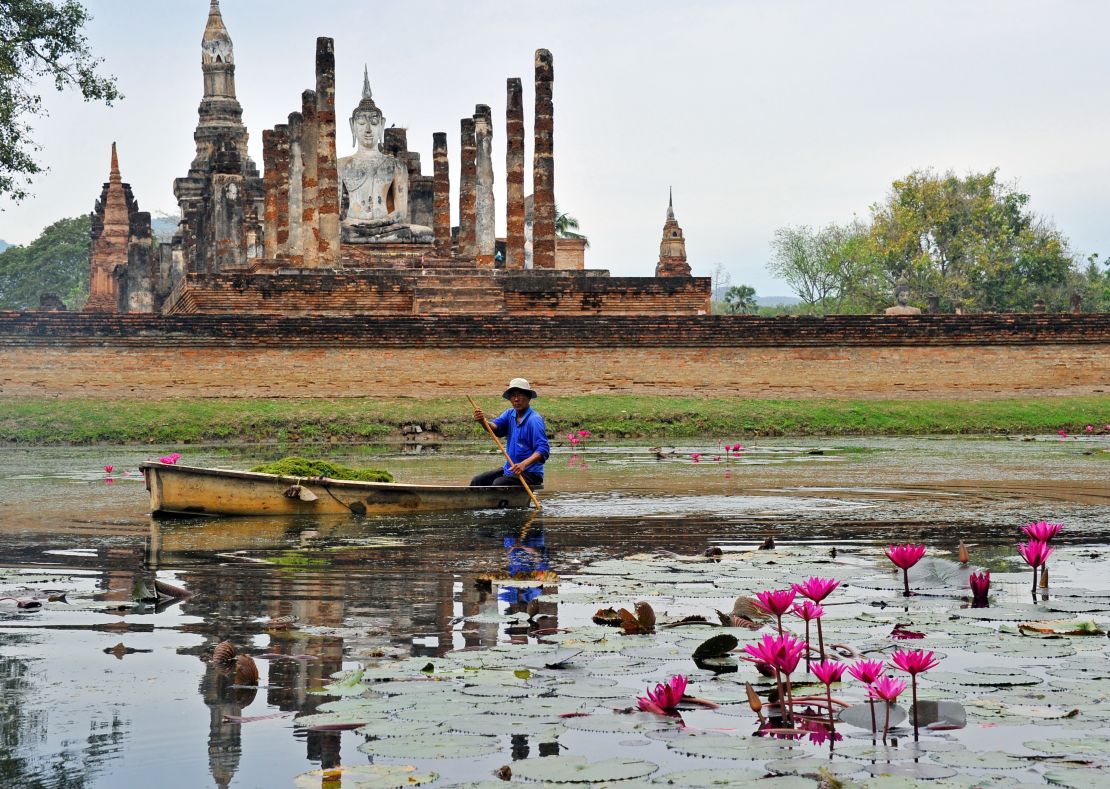
The best time to visit Sukhothai Historical Park is right when it opens at 6 a.m. Much like Ayutthaya, we wouldn’t be doing our duty if we didn’t recommend you check out the Sukhothai Historical Park, another UNESCO World Heritage Site.
Some of the most beautiful and best-preserved temple ruins date back to the 13th and 14th century, when this province was the center of a magnificent empire.
50. Samut Prakan: Replica museum
This wee ocean-side province has a strong connection to Thailand’s maritime history. However, forget all that and head to Mueang Boran (The Ancient City). Yes, it’s touristy, but it’s also popular with locals and for good reason.
It’s essentially an 80-hectare open-air museum with scaled down (but still big) replicas of almost every major attraction in Thailand. Get around by rented bikes or golf carts.
51. Samut Sakhon: Shrimp and salt farms
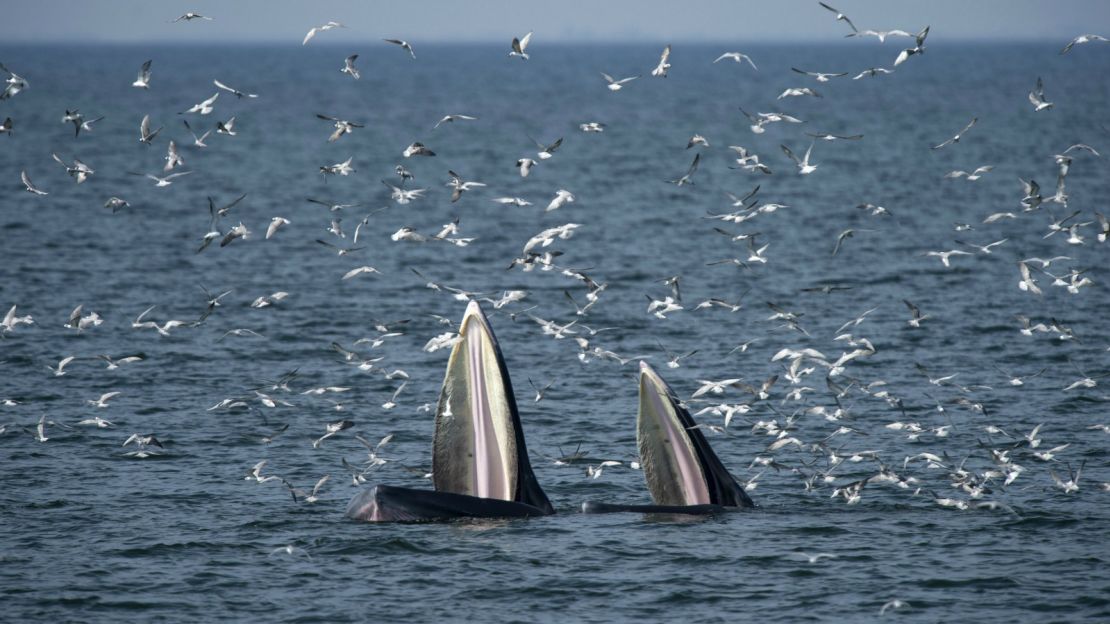
This small seaside province is dotted with salt and shrimp farms. Some are happy to give tourists driving through on their way from Bangkok to the beach a quick tour.
Samut Sakhon is also home to Wat Yai Chom Prasat, a 400-year-old temple that was clearly pretty awesome in its day but is now an overgrown ruin. Some good photo ops, for sure.
52. Samut Songkhram: Amphawa Floating Market
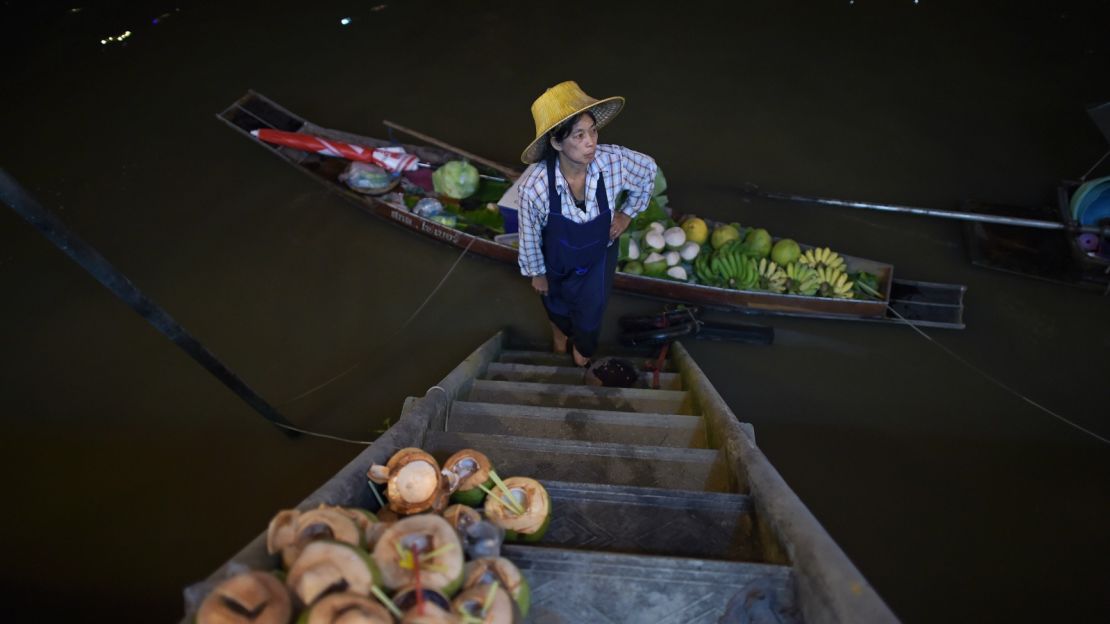
This little wedge of a province is Thailand’s smallest and isn’t on the radar for many travelers. However, the Amphawa Floating Market is a fantastic day out – more authentic and much less touristy than other floating markets and with oodles of small-town charm.
53. Saraburi: Farms and Sap Heo Waterfall
Just a few hour’s drive from Bangkok, this province is sort of like the Wisconsin of Thailand – lots of cows and dairy farms, many offering tours to visitors. But if bovine adventures aren’t your thing, take a hike to Namtok Sap Heo, a 30-meter waterfall with a large swimming hole.
54. Singburi: Heroes Park
Another miniature province north of Bangkok, the name means City of Lions, so it’s no surprise that we suggest you check out the Khai Bang Rachan Heroes Park.
It’s a large area with statues and displays celebrating a legendary scrap in 1765 between villagers and the invading Burmese army, when the villagers held off the attack for much longer than anyone thought possible.
55. Suphanburi: Beautiful Buddha
Because of its importance in many ancient to-and-fro battles between Thailand and Burma, there are plenty of historic temples in this province. Check out Wat Phra Rup, which has a reclining Buddha said to have the most beautiful face of any image in Thailand, and an important carved footprint of the Buddha, which was rescued by a monk during a Burmese invasion.
56. Uthaithani: UNESCO-listed wildlife park
This province has a rough history, as it was often the first defense against invading Burmese armies back in the day.
Today it’s a popular getaway for nature seekers. Check out the Huay Kha Kheng Wildlife Sanctuary, a 3,000-square-kilometer UNESCO World Heritage Site. It contains hiking trails, some truly dense jungle, and lots of wildlife.
A tour of The Siam, Bangkok’s most magical hotel
Getting to central Thailand
Given that Bangkok is smack in the middle of central Thailand, the best way to get around this area is by car or bus. Call 1490 for the latest bus schedule and route information.
Nok Air offers flights from Bangkok to Phitsanulok, while Bangkok Airways services Sukhothai.
EAST
57. Chachoengsao: Palm sap village
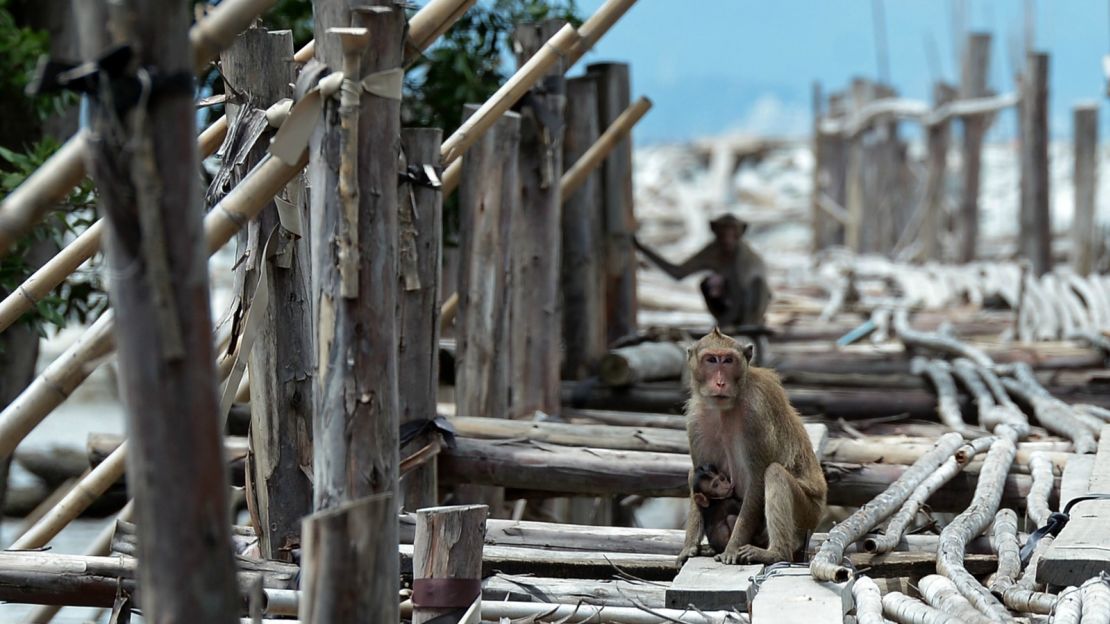
This province is veined with canals and still has plenty of villages that take pride in doing things the old way.
Take a trip to Mooban Namtan Sot, a village whose primary income is palm sap. Stop by any house to sample the raw syrup in a drink, or bring back a huge hunk of palm sugar – chip a piece off for your morning coffee.
58. Chanthaburi: Waterfalls
Abutting Cambodia as well as the Gulf of Thailand, Chanthaburi province is a pretty serene place that’s filled with fruit farms, making it a popular spot for agro-tourists.
If fruit ain’t your thing, head to Krating Waterfall, a 13-tiered splash-fest surrounded by lush bamboo forests and hiking trails. The Klong Narai Waterfall, about eight kilometers from Chanthaburi’s town center, is also impressive.
59. Chonburi: Pattaya
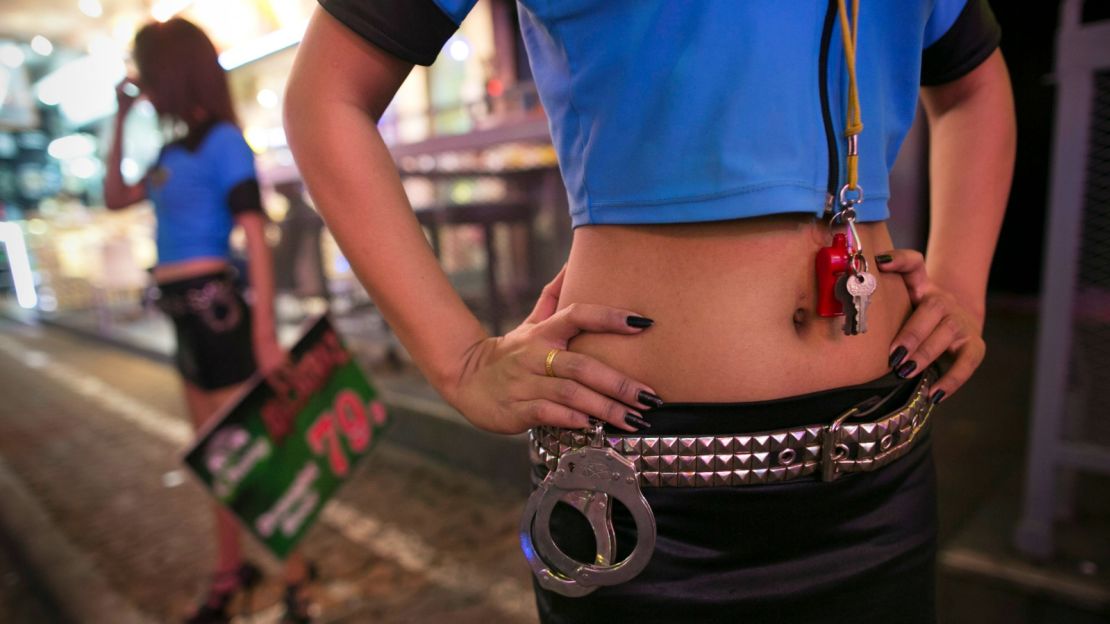
Admittedly, it’s a bit cheesy naming Pattaya as the top place to visit here. Although the former fishing village and current city of sin is stuffed with skeez, fake everything and drunken tourists, it’s somewhere you have to see at least once to believe.
A word of advice: don’t rent any Jet Skis. Tourists are known for getting pressured into paying for damage they didn’t create.
60. Prachin Buri: Rafting
This province is known for its orchards and high-quality fruit, but if adventure’s your thing, try white-water rafting on the Kaen Hin Phoeng River. Most hotels or guesthouses can hook visitors up with a tour company.
61. Rayong: Ko Samet
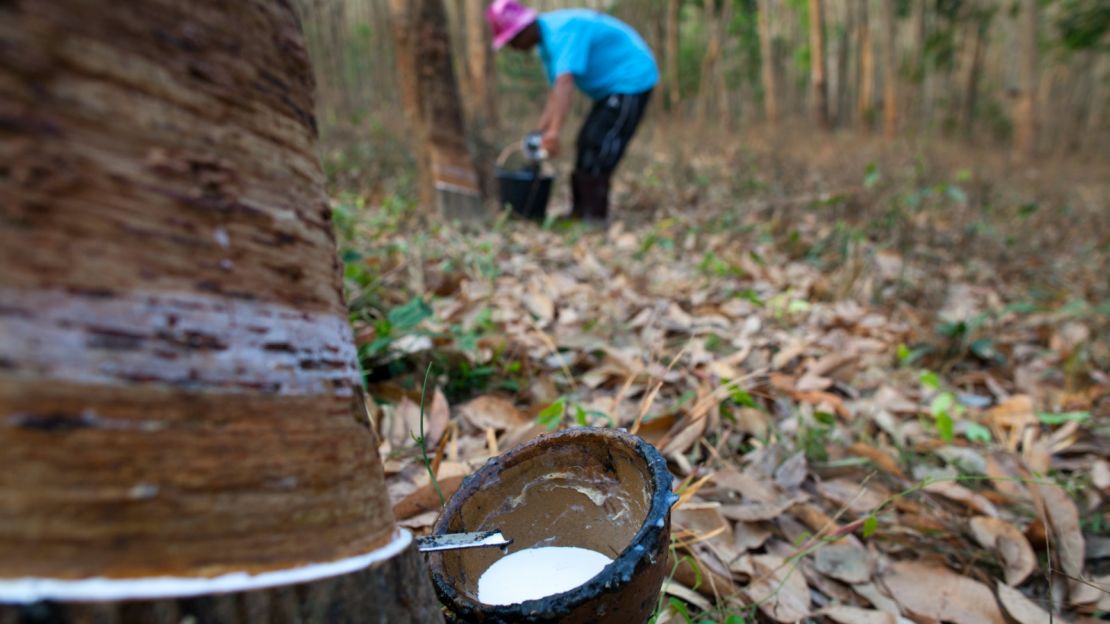
Most people don’t bother to stop in Rayong, simply passing through to hop on a ferry to get to the island of Ko Samet. And that’s what you should do, too. Rayong is a pretty province and all, but Samet is as close to a beach paradise as you’re going to get this close to Bangkok.
62. Sa Kaeow: Wildlife
Created in 1993 and snuggling up comfortably with Cambodia, Sa Kaeow saw lots of action back in the day when communist guerrillas used to hide out there.
Today it’s a bit quieter. One of the main attractions is Chong Klam Bon Wildlife Refuge, which houses and breeds a large variety of rare and endangered animals.
63. Trat: Islands and beaches
With the exception of Koh Chang, most of Trat’s islands don’t see much tourist action, despite having some of the country’s best beaches.
The southeastern-most province in Thailand has a colorful military history, but today it’s more known for its beautiful islands. Try Mu Ko Chang National Park, a marine area encompassing 52 islands big and small, popular and deserted.
Getting to eastern Thailand
Trat Airport, owned and operated by Bangkok Airways, services flights from Bangkok. The Soneva Kiri resort on Koh Kood also has a private airstrip with direct flights from Bangkok.
State-run buses run regularly from Bangkok’s Ekamai terminal. Call 1490 for the latest bus schedule and route information. Check out the State Railway of Thailand’s eastern train timetable too.
SOUTH
64. Chumphon: Snorkeling
Koh Tao is Chumphon’s most visited island, famous for its great snorkel and scuba sites. This long, skinny province is on the Isthmus of Kra, the narrowest part of the Malay Peninsula.
There are dozens of islands dotted down the long, narrow beach side of the province. Some are off-limits because of the very competitive swallow’s nest harvesting industry, but most – such as Koh Khai – are perfect for relaxing and snorkeling.
65. Krabi: Rock climbing

One of Thailand’s most popular tourist destinations, it’s a challenge to pick one thing to see here.
Hundreds of dive operators, tour companies, beaches, caves, hot springs and islands are there to choose from, while the province’s dramatic lime stone walls are a prime target for rock climbers.
66. Nakhon Si Thammarat: Wat Phra Mahathat Woramahawihan
Every year, thousands of Buddhists head for Nakhon Si Thammarat for the International Makha Puja Hae Pha Khuen That Festival.
Once part of the vast Malay Srivujaya Empire, the province today reflects this influence in much of its culture and infrastructure.
If you’re passing through head over to Wat Phra Mahathat Woramahawihan, one of the most sacred temples in southern Thailand.
67. Narathiwat: Ko Tanyong National Park
Part of the complex southernmost cluster of provinces in Thailand, this province has a long history of unrest.
Most countries advise against travel here due to the security situation but it is a beautiful place.
If you choose to ignore the warnings, check out Ko Tanyong National Park, which has plenty of beaches and islands – many deserted – to relax on.
68. Pattani: Arts and culture

Pattani is another one of Thailand’s provinces with a dense and turbulent history that has led many countries to advise their nationals to avoid it.
However, if you want a deeper understanding of the who, what and why of the unique culture there, check out Kallayani Wattana Institute of Arts and Culture, which has displays and educational materials on the history and people of this area.
69. Phang Nga: Similan Islands
Phang Nga’s Similan Islands offer some of Thailand’s best scuba diving. This province’s (well-milked) claim to fame is that key scenes for James Bond film “The Man With the Golden Gun” were shot there.
Much like Krabi or Phuket, to list a single attraction is impossible, but with the amount of beaches and islands that make up Phang Nga, you shouldn’t have any problem finding something to do. The Similan Islands, for instance, are renowned for their underwater offerings for scuba divers.
70. Phatthalung: Climbing
Unless you have a long rope and some climbing experience, it’s difficult to get up many of the limestone cliffs around the beautiful but little visited Phatthalung. But if you hit Khao Ok Talu, you can climb up the stairs and get a decent view of the surrounding area.
71. Phuket: Boats and beaches

The province of Phuket is a tourist playground and is the largest island in Thailand – approximately the same size as Singapore.
Despite its size and popularity, the province still has some surrounding islands offering solace, best explored by chartering a boat from one of Phuket’s many yacht rental companies. And just so we’re clear, the “Ph” at the beginning of Phuket is pronounced “p,” not “f.”
72. Ranong: Hot springs
One of the skinniest Thai provinces, Ranong has a long history built on mining and maritime trades. Take a walk to Raksawarin Park, which has several natural hot springs and hiking trails that lead up a lush, grassy mountain for great views.
73. Satun: Island hopping
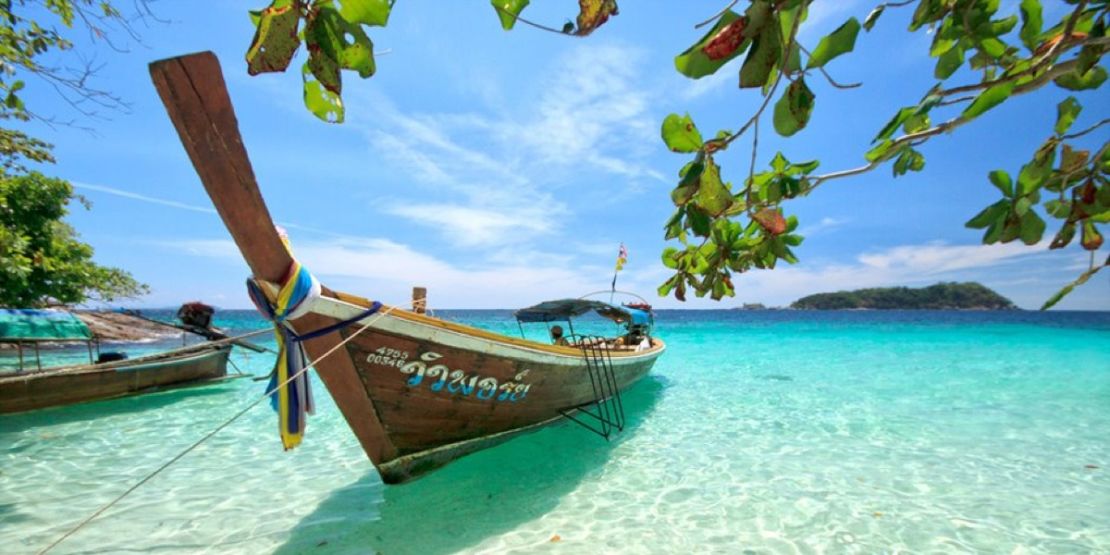
Another of Thailand’s southern Muslim provinces with deep Malay roots, most of the visitors passing through Satun here are on their way to the province’s stunning beaches.
Head to Ko Tarutao National Park, a UNESCO-listed ASEAN Heritage Park and home to some of the most beautiful beaches in Asia, especially Ko Lipe and Ko Tarutao, where “Survivor Thailand” was filmed.
74. Songkhla: Khao Nam Khang Tunnels
For killer sunset shots, head to the massive Songkla Lake. While not quite as famous as Vietnam’s Cu Chi Tunnels, the Khao Nam Khang Tunnels in Songkhla served a similar purpose.
Built by communist rebels in the mid-1970s before their ultimate surrender, the 1,000-meter-long tunnel (on three levels) is the longest man-made tunnel in Thailand.
75. Surat Thani: Khao Sok National Park
Surat Thani’s most popular destination is Koh Samui, but the mainland’s under appreciated Khao Sok National Park is just as stunning.
There’s so much more to this giant province in the middle of Thailand’s south, including the beautiful Khao Sok National Park. If you like birds, this is your place as it’s noted for its wide variety. There’s also lots of trekking, waterfalls and other outdoor adventures.
76. Trang: Thailand’s largest waterfall
Another province where trekking and outdoor adventure are the primary attractions, Trang has what is considered to be the largest waterfall in Thailand, Namtok Ton Te, which cascades down a 300-meter slope into a pool at the bottom, making for a delicious al fresco swim.
77. Yala: Wat Khuhaphimuk
Worn out yet? You’re at the last stop.
Pushing its way into Malaysia is Thailand’s southernmost province, making it a busy place for cross-border trade. While there head to Wat Khuhaphimuk, a cave temple with some dramatic lighting and many Buddha images, protected by a rock giant, which was carved in 1941.
Getting to southern Thailand
Thailand’s domestic airlines offer flights from Bangkok to Hat Yai (Songkhla), Trang, Phuket, Krabi, Nakhon Si Thammarat and Surat Thani.
Buses for Thailand’s southern destinations depart from the Sai Tai Taling Chan bus station. Visit www.railway.co.th for southern line train schedules.
Getting around Thailand in general
Thailand has a fairly good transportation network, making it easy to get to all 77 provinces directly from Bangkok via bus, plane or train.
Airlines servicing domestic routes in Thailand: Thai Airways, Nok Airways, AirAsia, Bangkok Airways and Orient Thai. Depending on the airline, some flights depart from Suvarnabhumi International Airport, while others use Don Muang Airport on the other side of the city.
Thailand’s state-run long-distance bus services are an easy, comfortable way to get from Bangkok to pretty much anywhere in the country. Call 1490 for the latest bus schedule and route information.
Thailand’s railway network is also a classic, albeit slower, way to see the country. Visit www.railway.co.th for schedule information and to book online.
Editor’s note: This article was previously published in 2012. It was reformatted, updated and republished in 2017.





















